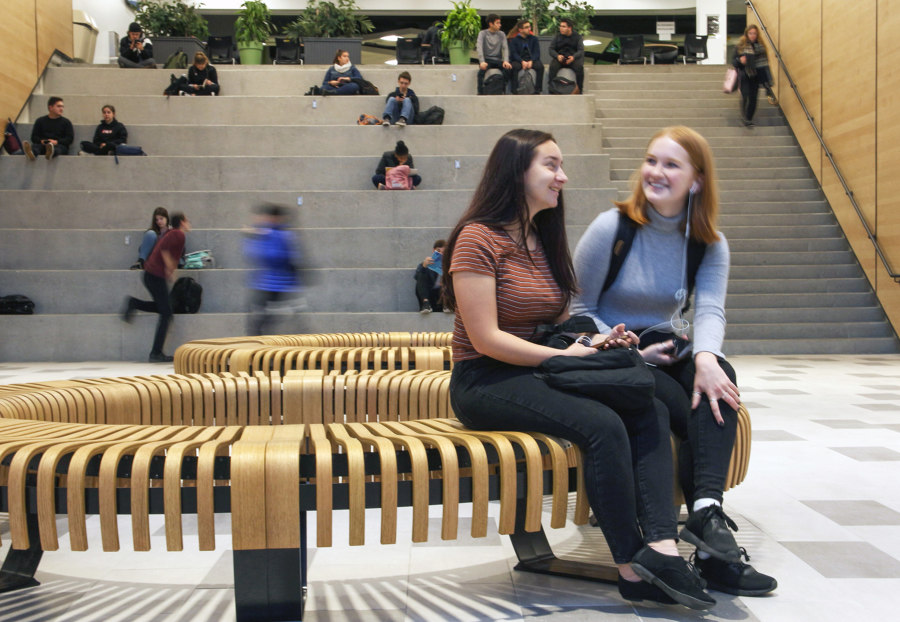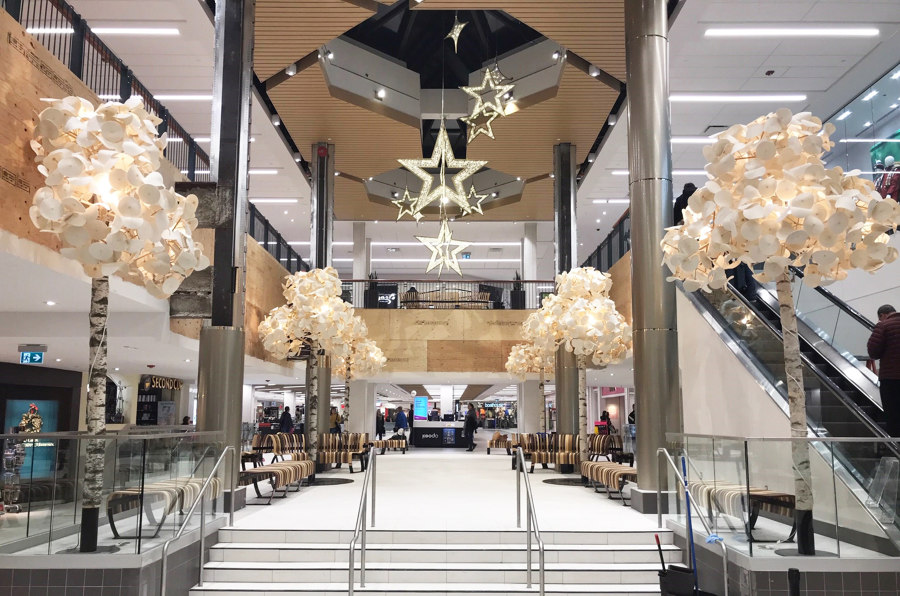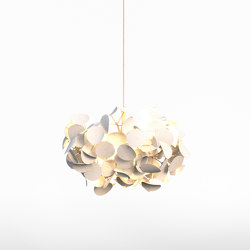Green Furniture Concept: We are the environment we inhabit
Historia de la marca de Emma Moore
Malmö, Suecia
08.04.22
Sweden's Green Furniture Concept creates furniture inspired by nature – reflected not only in its biophilic designs but in the company's sustainable manufacturing practices, too.
Place makers Green Furniture Concept design and furnish public spaces, from shopping centres to educational institutions, clinics to railway stations, guided by the principles of biophilia
In 1940, American nutritionist Victor Lindlahr wrote the book 'You are what you eat', consolidating thinking towards the idea that what we put into our body directly impacts our mental and physical health. In more recent times, popular chefs have taken over the campaign and prompted the overhaul of educational and clinical catering, nudging us towards universal acceptance of the powerful correlation between wellbeing and food, and an understanding that learning, behaviour and recovery can all be improved with the right diet.
But what of the health impacts of external factors? Research is now driving a new understanding of how our immediate environment and its emissions and sensorial stimuli might affect the health of our bodies. Could ‘We are the environment we inhabit’ be the new mantra for future wellbeing?
The Leaf Lamp Lighting series of floor lights and pendants, conceived to closely emulate plants, provide both lighting and acoustic solutions to public spaces, while often serving as focal points

The Leaf Lamp Lighting series of floor lights and pendants, conceived to closely emulate plants, provide both lighting and acoustic solutions to public spaces, while often serving as focal points
×Bringing the great outdoors inside
This is the thinking behind biophilic design, an increasingly popular approach to architecture and interior design. Defined, essentially, as a love of nature, in placemaking terms, biophilia is a human-centric approach that favours human connection to the natural world. So far, so Vitruvian; such a connection is, indeed, age-old, and filtering nature into our interiors is often a fairly intuitive act. But for some, such as Swedish placemaker and furniture designer, Green Furniture Concept, it has become a guiding principle, wrapped up inextricably with the nurture and preservation of nature through sustainable sourcing and manufacturing practices. It directs layout, flow, shape, materials, pattern, texture, alongside sourcing and process.
For Swedish placemaker and furniture designer, Green Furniture Concept, biophilic design has become a guiding principle, wrapped up inextricably with the nurture and preservation of nature through sustainable sourcing and manufacturing practices
‘We bring in living plants wherever possible: natural light, seasonality, fresh air, water, natural soundscapes and acoustics, scents, and flavours,’ says Brand Director of Green Furniture Concept, Adele Kamel. ‘We borrow colours, shapes, lines, patterns, and textures from nature. We use a palette of natural materials such as wood, stone, clay, shell, natural fibres, and textiles. And we look to nature for organisation and orientation of spaces, creating zones and transitions, balancing open space with hiding places.’
The highly sustainable modular seating system, Ascent, is inspired by mountains and oceans, bringing nature’s flowing contours and the warm texture of wood inside

The highly sustainable modular seating system, Ascent, is inspired by mountains and oceans, bringing nature’s flowing contours and the warm texture of wood inside
×Health benefits of immersion in nature
As for the returns of embracing nature in this way? Studies have been underway for many years, investigating what exactly it is about nature that we want and need in our constructed environments, and what precisely are its positive effects. ‘Science offers clear evidence connecting nature with health. We know that being surrounded by nature boosts immunity and reduces stress (Qing Li 2013), speeds up recovery from illness and surgery (Ulrich 1984), and increases concentration levels (Kaplan 1989),’ says Kamel.
‘We bring in living plants wherever possible: natural light, seasonality, fresh air, water, natural soundscapes and acoustics, scents, and flavours’
Natural daylight has also long been understood to improve learning and mood when used in educational settings. More recently there has been research – following the findings of the likes of mathematician and architectural theorist Nikos A. Salingaros – into our relationship with the geometries of nature and its fractal patterns, and how we connect to plants through their geometrical structure and feel at ease with a built environment that incorporates similar patterns.
The patterns of nature are known to offer calm and composure, and are seen in the ergonomic Nova C Seating. The modular design is idea for transport hubs, and educational settings

The patterns of nature are known to offer calm and composure, and are seen in the ergonomic Nova C Seating. The modular design is idea for transport hubs, and educational settings
×Incorporating the natural world
Taking all this on board, Green Furniture Concept weave the natural world into the fabric of spaces with in-house designs such as the Leaf Lamp, which emulates the shape and arrangements of leaves on a tree quite literally, while the Seamless Table is a sinuous, meandering plane, taking its cues from the organic world. Modular benches have familiar ribbed patterns and the materials are renewable woods and wool – taken from nature with minimal intervention and finished with non-toxic treatments. These are deployed hand in hand with natural daylight, free, uncluttered space and living plants, with planters usually incorporated into Green Furniture Concept’s furniture design.
Its work can be witnessed at transport hubs such as London’s Victoria Station where planting and wooden furniture is designed to make us enjoy the journey as much as the destination; retail centres such as the Avalon Mall in Newfoundland, where the Leaf Lamp creates internal avenues of ‘trees', and College Montmorency, Laval, Quebec, where daylight, volume and flow are as much in play as more tangible aspects of biophilic design. Health institutions such as the Children’s Hospital in Michigan are arguably places set to benefit most from the design philosophy – adding to the known salutary advantages of Green Furniture Concept’s nature-infused approach is its assertion that natural wood and beeswax polish are antiseptic.
Green Furniture Concept uses design and layout to create shapes and pathways that help direct the flow in retail spaces, seen here at the Avalon Mall, Newfoundland, and Rive Gauche, Charleroi

Green Furniture Concept uses design and layout to create shapes and pathways that help direct the flow in retail spaces, seen here at the Avalon Mall, Newfoundland, and Rive Gauche, Charleroi
×Business efficiency comes as a happy by-product of biophilic design. ‘It has the potential to increase visitor dwell-time and reduce stress,’ asserts Kamel. ‘And making people feel good can lead to an increase in business. We call it the retail effect. It has also been shown in many studies to reduce the amount of sick leave and increase productivity in working environments.’ Add to this the fact that Green Furniture Concept’s furniture largely remains unvandalised and the health and economic benefits are hard to deny. ‘We are even making the vandals feel better!’
© Architonic




















